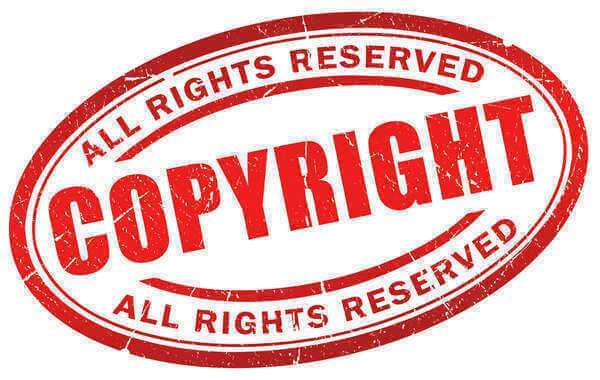This article is written by Vandita Bansal, from Symbiosis Law School, Noida. This article analyses the takedown service provisions in India.
Table of Contents
Introduction
What do you mean by copyright? A right that guarantees special powers to the creators of all artistic, literary and musical works to protect their originality and creativity from being infringed or exploited without their permission. If anyone wants to use the copyrighted works of others, they have to take permission for the same. Copyright helps the creators to promote their work to the public at large. Copyright protection starts as soon as the content is created. In India, protection of copyrights is provided by the Copyright Act,1957 and Copyright Rules, 2013.
It was recently discovered that several internet platforms are posting infringing content to their websites without the permission of copyright owners.Since the internet nowadays has become easily accessible the cases of copyright infringement over the internet have increased. To tackle such a situation, the government after a detailed analysis introduced the concept of takedown services where the owner can issue takedown notices to the platforms infringing their right of copyright. As we know, the internet is an open platform and any person residing anywhere can upload any content they wish to, the internet service provider or an intermediary cannot be held liable for copyright infringement as under a model called a “Safe Harbour” they are given immunity from any liability arising out of copyright infringement.
What is the takedown service
In India, if offers and creations are done by any intermediary produces or presents a link to any copyrighted work amounting to piracy or copyright infringement cases then the liberty has been granted to the owner to send a takedown notice for copyright infringement to withdraw the content or link from the respective intermediary’s website.
A takedown notice is a kind of complaint letter directed to a website administrator mentioning that the content presented by the website has infringed the copyright of the owner and asking them to remove such content from the website. Along with removing the content, they are supposed to take a digital fingerprint of it and store the same in their system so that the content would not be posted again until and unless the dispute has been resolved. For example- an internet service provider can be of any type, website operator, web presenter, search engine, or any other type of online site operator. As per copyright law, takedown notice should include several elements and if the elements are missing then the service provider has the right to refuse to take down the content infringing copyright of the owner.
In countries like the USA, laws governing takedown notices are mentioned under the Digital Millennium Copyright Act,1998. The law gives strict punishment for copyright infringement along with providing immunity to online service providers and Internet Service Providers (ISPs) located and listed in the USA, like YouTube in case of copyright infringement. Earlier, unlike the USA, India didn’t have any specific law providing takedown notice for copyright infringement, it only had copyright infringement penalties. But now due to increasing copyright infringements, India has begun issuing takedown notices to middlemen who infringe on the owners’ copyright.
Use of take down services
Ongoing copyright infringements have led owners to use takedown services to protect their content from being uploaded illegally. The use of this service is to inform Internet Service Providers (ISPs) that a concerned website has presented its content without their knowledge thus infringing the rights of the copyright owners. The take-down notices are also used to prevent access to any unlawful, malicious, and offensive content published on the intermediary platforms. To make sure that such derogatory and illegal content is not published by the people, the law has set up a grievance redressal mechanism that puts intermediaries under an obligation to perform sufficient due diligence. Many social media platforms give access to their users or any copyright owner to raise complaints directly without any process regarding copyright infringement with the platforms which aid in taking down any content violating the copyright owner’s rights. Some even go to the extent of penalizing the person who publishes the infringing content by restricting their access to the respective platform.
Recently, Delhi High Court of India in the case of Swami Ramdev & Anr. vs Facebook, Inc. & Ors.(2019) held that the online platforms and intermediaries are expected to deactivate or block the content against which the takedown notice has been issued on a universal level as such published offensive content is having a negative impact worldwide. A condition is also put on these online platforms and intermediaries that they cannot use geo-blocking techniques to deactivate or block access to the offensive content in a particular geographic region.
How to file a copyright takedown notice in India
Under Section 52(1)(c) of the Indian Copyright Act,1957, a copyright owner is obligated to issue a notice to the intermediary whose website displays or allows access to infringed or pirated content.
Rule 75 of the Copyright Rules, 2013 lays down the fundamentals of takedown and the process of delivering the same. The following must be kept in mind while drafting the notice-
- The description should be adequate to identify the work. There are millions of similar articles released on the internet every day, so the description must be specific and not unclear in order to stand out. A copyright protected material must be clearly identified on websites such as YouTube or Facebook before it may be removed.
- Details mentioning that the complainant is the only owner of copyright in the work. As a licensee, the complaint must include a copy of the licence agreement along with the notice of copyright takedown.
- Copy of the work which is transient or incidental storage should be an infringing copy owned by the complainant and it should not be stated under Section 52 or any other section permitted under the Act
- Location details where the storage of the work took place. The copyright takedown notification must provide a link or URL to the infringing work. If a website has a link, its server can remove it instantly.
- All the details of a person who commits the crime by uploading the content of the owner by infringing his copyright
- Undertaking that the complainant will file an infringement suit in the appropriate court against the person who is responsible for uploading the infringed content along with producing orders of the court having jurisdiction within the period of 21 days from the date of receipt of the notice.
In India, a copyright takedown notice must only be sent after the owner talks with a copyright lawyer to completely understand the legal procedure and ensure that a strong case is presented that does not fall under Section 52 of the Copyright Act, 1957.
In addition the Copyright Rules, 2013 also lays down that as soon as the receipt of the written complaint is received by the person responsible for the storage of the infringed copy of the original work he is directed to remove the infringed content within 36 hours and has to take necessary measures to avoid access for the same for a period of 21 days from the date of receipt of the complaint or till he receives an order restraining him from providing access from the appropriate court, whichever is earlier.
Applicable laws
The Copyright Act,(1957) regulates the infringement of copyright in India. As per Section 51 of the Act, copyright is infringed when someone interferes with the exclusive right of the owner and makes illegal use of it without receiving authorization from the owner or registrar.
Section 52(1)(c) of the Indian Copyright Act,1957 states that temporary or incidental storage of work or performance to provide electronic links, access, or integration, where the owner has not expressly prohibited such links, access, or integration, falls under the ambit of fair use of copyright. If the person is found responsible for the storage of the copy he will receive a written complaint from the owner of the copyright, mentioning that such transient or incidental storage is an infringement. The person responsible is further refrained from promoting access for a period of 21 days or till he gets an order from the court and if not received before the expiry of the time period of 21 days then he is allowed to provide the facility of such access.
Information Technology Act,2000
Information Technology Act,(2000) regulates intermediaries or ISP involved. As per the Act, an intermediary is an individual who receives, stores, or circulates a message on behalf of another person or offers any service related to that particular message. If the intermediary does not comply with the takedown notice of the government or gets involved in an unlawful act then, the protection given to him may get withdrawn anytime. Also, neither intermediary nor ISP shall be held liable for the link presented or provided by it for any third party.
Intermediaries are protected by Section 79 of the IT Act from liability for copyright infringement although Section 81 of the IT Act states that the restrictions of Section 79 do not prevent anyone from exercising any rights provided under the Copyright Act 1957. The requirements of the IT Act, therefore, have an overriding impact on any other law. However, copyright owners are excluded from the practice of their copyright law rights. It provides that the owners of copyright can take action against intermediaries if they face any direct infringement by them.
Safe Harbour Principle( Section 79 of IT Act,2000)
Section 79 of the Information Technology Act 2000 added the safe harbour immunity clause that exempted an intermediary from being held accountable for third-party content on its platform – provided that the intermediary performed “due diligence” as defined by the Central Government. Intermediaries who failed to exercise “due diligence” as required by the Central Government were held accountable for any actions taken by third parties, even if they were unaware of them. After the 2008 Amendment, this issue remained unchanged, as intermediaries were allowed to continue applying the safe harbour principle to protect themselves from being held liable for decisions taken by an external third party without their knowledge.
Information Technology Rules, 2021 on takedown service
In February of this year, the Government of India brought in the Rules on Information Technology,2021 (Intermediary Guidelines and Digital Media Ethics Code). The laws force the intermediaries/platforms in social media to abide by the rules stated within three months, which ends on May 25, 2021.
According to this, the intermediary must prevent its user from presenting, uploading, modifying, or transmitting any such information which may result in infringement of any trademark, patent, or copyright by issuing rules and regulations, privacy policy to them beforehand. Also, intermediaries cannot deny the accusation and have to comply with takedown notices issued to him. It states that whenever an intermediary receives such notice from the court or is informed by the government or third party, about infringement of content, he then cannot store or present any illegal information which is forbidden by the law. He has to act within the period of 36 hours or else have to face further consequences. It also allows the intermediary to establish grievance redressal mechanisms for handling the complaints. The intermediary is therefore required to appoint a Grievance Officer for reviewing complaints against the breach of rules. The Grievance Officer is expected to identify the complaint within 24 hours of the time limit and dispose of the same within 15 days of receipt of the complaint. In addition, a Chief Compliance Officer has to be appointed by social media intermediaries in compliance with the Act and IT Rules. They have to produce a monthly compliance report along with all the details and actions were taken by them in resolving them. If not able to produce any information then the officer will be held liable.
Since, IT Rules 2021 are self-explanatory, therefore non-compliance means that intermediaries cannot claim the safe harbour principle and are liable for any acts committed by third parties, even if they were not aware of them. Due to the severity of the penalties for non-compliance, intermediaries should respect the IT Rules 2021 to protect themselves from penalties and to avoid losing the safe harbour principle, which acts as a virtual barrier. As far as the future is concerned, different intermediaries can pose certain challenges to the legality of the IT Rules, 2021 in order to maintain their autonomy and control.
Judicial precedents
MySpace Inc. v. Super Cassettes Industries Ltd. (SCIL) (2016)
Here, in this case, Myspace Inc. is a US-based company, acting under Digital Millennium Copyright Act (DMCA) thus following the concept of “Notice and Take Down”. It is a website that provides users with a platform for viewing, uploading, and sharing videos, music, etc for entertainment purposes. The content uploaded on site was infringed as stated by the respondents. Despite the warning given to them, the content was still broadcast on the website violating SCIL’S copyright. The Delhi High Court held that the site was liable and that the infringed content on copyright was required to be taken down within 36 hours of “actual knowledge” of the infringement.
Christian Louboutin SAS v. Nakul Bajaj (2018)
In this particular case, the plaintiff sued a website named Darveys.com, selling imported luxury items on the basis that it was offering for sale counterfeit and defective products which were infringing the plaintiff’s trademark. Acting as an active participant in the trade, the High Court of Delhi observed the website as an intermediary and held liable the same for trademark infringement and stated taking shelter under the safe harbor provisions of the IT Act is not permissible.
Swami Ramdev v. Facebook, Inc. & Ors (2019)
In this case, defendants Facebook, Google, Youtube, and Twitter were ordered to remove a list of URLs from their respective platforms that were allegedly derogatory to the plaintiffs. The initiative was taken by yoga guru Swami Ramdev stating that defamatory videos and content in relation with the book named ‘Godman to Tycoon – The Untold Story of Baba Ramdev’ was posted on the defendant’s platforms. It was held by the Delhi High Court, after considering the law on intermediary liability under the Information Technology Act, 2000 and Information Technology Rules, 2011, that the intermediates are directed to take down and block all such unlawful content and videos uploaded on their platforms from I.P. addresses within India, on a universal level. For the content posted outside the territory of India, they were directed to use geo-blocking tools and disable viewership of the content.
Conclusion
We can finally conclude that Section 52(1)(c) of the Indian Copyright Act,1957 provides the owner with the right to issue a takedown notice to online platforms ordering them to remove infringed content from their websites as soon as possible. Earlier the liability of the intermediary towards the copyright owners was secondary and was only accountable for the same if the order given by the Court was not followed. But now this is not the case, the new IT guidelines have given a lot of expectations to the content providers, as now they can immediately file a complaint with the Grievance Officer and seek remedy for the same.
References
- https://www.mondaq.com/india/copyright/1084408/takedown-services-for-protection-of-copyright
- https://www.idsa.in/idsacomments/it-rules-2021-dbhattacharya-040621
- https://www.investopedia.com/terms/c/copyright.asp
- https://www.mondaq.com/india/social-media/1093222/safe-harbour-principle-and-the-information-technology-intermediary-guidelines-and-digital-media-ethics-code-rules-2021?type=mondaqai&score=56
- https://www.myadvo.in/blog/takedown-notice-for-copyright-infringement-in-india/
Students of Lawsikho courses regularly produce writing assignments and work on practical exercises as a part of their coursework and develop themselves in real-life practical skills.
LawSikho has created a telegram group for exchanging legal knowledge, referrals, and various opportunities. You can click on this link and join:
https://t.me/joinchat/J_0YrBa4IBSHdpuTfQO_sA
Follow us on Instagram and subscribe to our YouTube channel for more amazing legal content.
 Serato DJ Crack 2025Serato DJ PRO Crack
Serato DJ Crack 2025Serato DJ PRO Crack











 Allow notifications
Allow notifications



